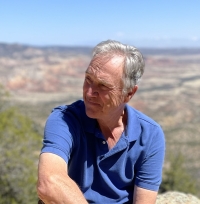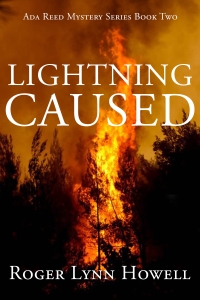Where Fiction and Geology Join
Both the novelist and the geologist, I think, are obsessed with discovery. They seek out worlds that don’t exist in our time and space, but only in the shadowed and sometimes flawed realizations of the investigator. And both the novelist and the geologist occupy themselves peeling back the veils layer by layer, prizing out the components and characteristics of their vaguely discovered worlds; bringing them into the light for others to see.
Let me share a very real example. It turns out that long ago, in a place that is now central Nevada, a vast lake some three hundred feet deep occupied a long, deep valley between mountain ranges. Waves washed the shores of the lake, and fish and snails lived among the reeds of the shallows. I know this because I drilled a dozen kilometer-deep holes through the lake sediments and picked apart the drill cuttings foot by foot and sometimes chip by chip. The lake rose and fell, and it sparkled in the sunshine some four and a half million years ago. For millennia, shells, leaves, and skeletons accumulated in its bottom sediments. But one dark day (or more likely over a dark few months) that world was overwhelmed by a volcanic eruption. Hot ash fell from the sky into the water, where it quickly devitrified to crystal-rich layers of clay. Heat and acid reactions killed all living things, and the clays built up until the lake was filled. Still the ash fell. At the point where the water was finally used up, fumaroles smoked and steamed, and there, beautiful jaspers and agates crystallized at the water-fire interface. Once the ash stopped falling, the rains began, and they washed ash and soil from the surrounding hills into the basin. Over thousands more years the long valley was choked with thick mudflow deposits, which in turn were overlain by river-borne silts and eventually wind-blown dunes of sand.
It had been a sunny, blue, watery world and then it was lost but for a thick, unremarked sequence of mud. And then it became a living world again in the minds of a few of us who picked through the mud. And now it lives in your mind, as well.
The novelist and the geologist work with sparse outcrop in most instances, seeking scattered evidence wherever we can find it and filling-in where conjecture is needed. In that way, we approximate what once was or invent what might someday be a complete world—fecund, wet, washed in sunshine and swept with sound and fury. Small clues, missed if you're not careful, can tell of mile-high glaciers bulldozing whole landscapes, of soft raindrops dimpling beach sands, or of a woman plain and disaffected, no longer young but still hopeful of love.
Some investigators—both literary and lithological—are preoccupied with origins, and work forward, letting provenance and environment predict the composition and texture of all to follow. Others who look backward rely on the Principle of Uniformitarianism: the present is the key to the past—and they untangle the folds and faults and the metamorphisms to understand the many stresses that acted upon the subject and left it in its current deformed condition. Both adhere to sound principles of superposition and cross-cutting relationships to ensure that a smooth logic is maintained.
Both the novelist and the geologist work with unshakable faith that there is a true answer to be had, but that theirs is never the last word. They can only offer their best guess according to the available evidence. Still, they’ll not rest while a thing remains unknown, while a world waits to be born.

.png)
